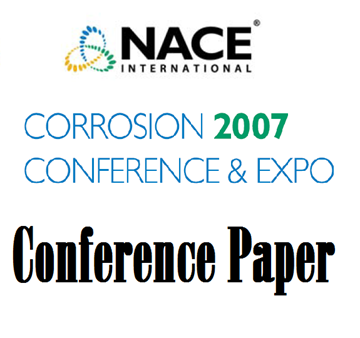Search
07210 Long Term Degradation of 0.5Cr-0.5Mo Plate Material in a Black Liquor Incineration Unit
Also Purchased
07212 Rotary Lime Kiln Material Issues and Repairs
Product Number:
51300-07212-SG
ISBN:
07212 2007 CP
Publication Date:
2007
$20.00
07205 Corrosion of Stainless Steel in Sulfamic Acid Cleaning Solutions
Product Number:
51300-07205-SG
ISBN:
07205 2007 CP
Publication Date:
2007
$20.00
07204 Bicarbonate Inhibition of Thiosulphate Pitting in 304L Stainless Steel
Product Number:
51300-07204-SG
ISBN:
07204 2007 CP
Publication Date:
2007
$20.00




